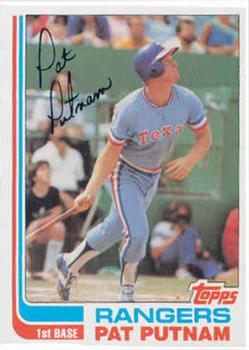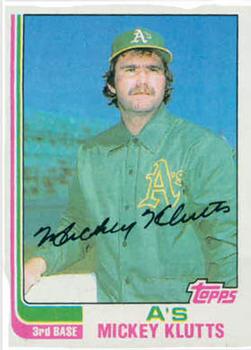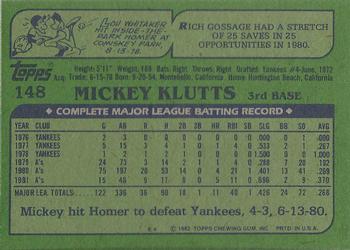Who Can It Be Now?
Ramón Antonio Aviles was born on January 22, 1952 in Manati, Puerto Rico. Not to ruin the conclusion, but Mr. Aviles also passed away in Manati on January 27, 2020. I bring that up because, for this biography, I will be borrowing liberally from the excellent RIP Baseball, which posted a full obituary last year for Mr. Aviles.
Aviles grew up wanting to be a doctor, but his family's more humble blue collar background (his dad was a police officer) meant that he could not afford to pursue that dream. Aviles attended Fernando Callejo High School in Manati -- a school which also produced Carlos Beltrán and brothers Javier and José Valentín.
Aviles became an excellent baseball player -- good enough for the Boston Red Sox to sign him in the fall of 1969 as an amateur free agent at shortstop in the years before Puerto Ricans were merged into the draft. As RIP Baseball notes, Aviles got his chance thanks to his pal Juan Beniquez, who convinced the Red Sox to give Aviles the tryout that led to Aviles's signing.
From there, Aviles began his slow climb up the Red Sox ladder, spending 1970 and 1971 in low-A and high-A ball. After the 1970 season, the Red Sox had identified Aviles as having sufficient potential as a hitter to suggest that he learn 2B and 3B in addition to shortstop with the idea that the versatility for he and a few other infield prospects would aid in their climb up the ladder and into the major leagues. This paid off eventually. Aviles moved up to AA for the 1972, 1973, and 1974 seasons, then ascended to AAA starting in 1975. He played full seasons in 1975 through 1977 in AAA.
Aviles was on track to make the major league team in 1977, but he was sidetracked when he and Jim Rice collided with one another trying to make a play. Aviles separated his shoulder -- you would expect that the guy who is 5'9" tall and weighed 155 pounds would lose in a collision with Jim Rice.
The Red Sox did give him a cameo appearance in 1977, calling him up in late June when the Red Sox needed an outfielder. Don Zimmer apparently wasn't told about the call up and only used Aviles one time in a doubleheader against the Brewers in mid-July. He was brought on to pinch hit for Bernie Carbo and executed a perfect sacrifice bunt, moving Carlton Fisk to third base and George Scott to second base. For what it's worth, the Sox did not score that inning -- the Brewers walked Butch Hobson intentionally before Rick Miller hit into a flyball double play thanks to Jamie Quirk throwing Fisk out at the plate.
In any event, that was Aviles's only appearance for the Red Sox, who sold his contract to the Philadelphia Phillies at the end of spring training in 1978. The Phillies parked Aviles at AAA in 1978, where he played second fiddle to future major leaguers Jim Morrison and Todd Cruz, and for part of 1979. But the Phillies gave Aviles a chance at playing in the big leagues when Manny Trillo broke his arm on May 2, 1979. Aviles had the best hitting stretch of his career -- hitting .480/.536/.560 in his first 9 games with the Phillies before cooling off. He was sent back down to AAA in June after Trillo returned, but the seed had been planted with the team that Aviles could be a fill-in for the Phils.
Aviles parlayed this opportunity into a three-year stint with the Phillies. He still spent a couple of weeks at AAA in 1980, but he was called up in early 1980 when Trillo got hurt again -- this time a sprained ankle. The team decided this time to keep Aviles around, and him serve as the backup infielder to Trillo and Larry Bowa. Because of his role as the backup infielder, Aviles was the proud owner of a World Series ring for the 1980 Phillies even though he did not appear at all in the Series.
He struggled in 1981 to hit anywhere near as well as he had in 1979 or 1980. He went back to AAA for a while, and only really appeared as a late-inning defensive replacement. Shortly after the 1981 season ended, however, the Phillies traded him in a minor deal to the Rangers for pitcher Dave Rajsich.
Neither Aviles nor Rajsich appeared in the majors after the trade and, in fact, both men's major league careers were over before they were traded. Because he failed to make the team out of spring training, Aviles asked the Rangers to trade him. They obliged, and he went back to the Phillies system.
He played in 1982 there and then served as a player/coach in 1983. That role set the stage for his next chapter: coaching and managing throughout the minor leagues. For the next 25 years, Aviles served as a minor league coach, manager, and roving instructor. He spent most of his time in the low minors, though he did hop up to AAA in 1996 when the Phillies fired Butch Hobson due to Hobson's arrest for cocaine possession. He also managed regularly in the winter league in Puerto Rico and won a number of championships there as well.
In 2005, he hopped into the Brewers system just in time to manage Ryan Braun for Braun's first pro season with the West Virginia Power before he closed out his career as the manager in 2008 with the Burlington Lake Monsters and in 2009 as the hitting instructor for the Hagerstown Suns.
Aviles suffered from diabetes and high blood pressure. He was scheduled to start kidney dialysis to help treat his issues, but he passed away on January 27, 2020 just before that treatment could start. He was 68 years old.
Family Ties
Aviles's nephew is Mike Aviles, who spent 10 years in the majors as a utility player for the Royals, Red Sox, Cleveland, Tigers, and Marlins starting in 2008 and ending in 2017.
Trivial Pursuit
According to RIP Baseball's citation to a 2006 profile of Aviles in Florida Today, Aviles was the first -- and perhaps only -- Puerto Rican to win a Caribbean World Series as a player, manager, and general manager. Overall, Aviles won a total of 25 championships in professional baseball as a player, manager, coach, and general manager.
Nanu Nanu
This is Aviles's final appearance on a Topps baseball card.
His baseball card history is all over the place. He made his debut on a card in 1978 in the SSPC 270 set as a member of the Red Sox. After his 1979 appearances with the Phillies at the age of 27, Topps put him on the Phillies "Future Stars" card in the 1980 set with Kevin Saucier and Dickie Noles. He appeared in 1981 and 1982 in the Topps and Fleer sets, but he never appeared on a Donruss card.
A Few Minutes with Tony L.
Aviles clearly was a baseball man to his core once it became clear to him that he would never become a doctor. His roles in the Phillies organization from 1983 through 2002 meant that he played an intimate role in developing at least some of the players that would go on to help the Phillies to make the World Series in 1993.
As was the case for Dave Edwards, I do not have any independent recollections of Aviles as a player. That's probably not surprising. Aviles only played in 117 games, only had 223 plate appearances, and his major league career ended before I hit double digits in terms of age. Even his only appearance against the Brewers took place when I was just five years old and hadn't even started kindergarten.
Feel free to share any memories that you have of him as a player, coach, or manager below.













